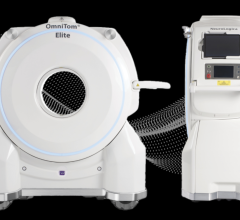
September 17, 2009 - Inflation rates for healthcare supplies are projected to remain unchanged through 2010, according to an analysis released by the Premier healthcare alliance.
Premier’s Economic Outlook and Inflation Estimates analysis through 2010 suggests annual market inflation rates will increase on average between 1.6 percent and 4 percent across categories such as cardiovascular services, facilities, imaging and nursing. These predicted market price increases are similar to those projected by Premier in its March 2009 analysis and suggest that incremental inflationary factors are waning.
The Economic Outlook is a semiannual report that projects rates of inflation for the ensuing 12-18 months. Premier produces a new analysis every six months to ensure projections are reflective of changing market trends. The analysis helps alert Premier alliance hospital members to market forces that could drive price changes in the coming months and years.
According to the analysis, the healthcare industry may see pricing changes related to the following factors:
· Isotope shortages – Continued price increases are expected in this area, which has experienced increases by double digits over the past 18 months due to limited production capacity worldwide; only five nuclear reactors on the planet are capable of producing the needed isotopes, which are used in nuclear imaging.
· New technology expenses – Products such as radio frequency identification (RFID – used to track items in case of a recall) enabled sponges and pacemakers with capabilities in place for home checkups will increase initial medical equipment expenses for hospitals, but will result in tremendous savings over the life of the products.
· Pharmaceuticals – As generic versions of key drugs infiltrate the market in the coming months (at least 18 key pharmaceutical products are expected to have their exclusivity rights expire before the end of 2009), expect costs for these drugs to decrease.
· Synthetic rubber prices – As the cost of rubber (both synthetic and natural) begins to increase to reflect the resurgent demand, healthcare professionals could see an increase in all products containing rubber, such as gloves, airway tubes, stomach tubes, rubber sheeting, irrigating syringes and water bottles.
· Pandemic disaster preparation techniques – Items such as gloves, face masks and gowns are in high demand as providers prepare for an influx of H1N1 influenza cases this fall; higher inventory levels may be required to support disaster readiness plans.
· Oil prices and distribution costs – Price increases are expected in medical materials such as bandages, syringes, vinyl gloves, catheters and medical film that contain synthetic rubber, plastics, resins and other oil-based materials. The market prices of these materials will naturally fluctuate with the cost of oil.
For more information: www.premierinc.com


 October 03, 2025
October 03, 2025 









